Leningrad Dutch: Complete Guide

If you want to play for a win with Black pieces, you should have fighting openings in your repertoire. Such openings keep the game tense and don’t allow White to trade many pieces early. It is also nice if it gives Black attacking possibilities.
Against 1.d4, one of such openings is the Dutch Defense. With 1…f5, Black breaks the symmetry and grabs space on the kingside. The Dutch is flexible. Black can choose to play the Stonewall, the Classical, or the Leningrad Variation. The latter option is favored by many strong grandmasters.
The Leningrad Dutch is an opening variation that gives Black excellent winning chances. It was developed by Soviet grandmasters in the 1960s and 1970s. Now it is one of the systems that the strongest grandmasters employ in must-win situations.
Among its main adherents are Hikaru Nakamura, Peter Svidler, Gata Kamsky, Mikhail Gurevich, Vladimir Malaniuk, and many others.
The Leningrad Variation is characterized by Black’s dark-squared bishop fianchetto.
The central position of the variation arises after 2.c4 Nf6 3.Nf3 g6 4.g3 Bg7 5.Bg2 d6 6.0-0 0-0 7.Nc3:
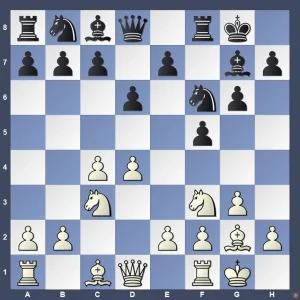
Black’s setup resembles the King’s Indian Defense, and the arising middlegames will often be similar. At the same time, the pawn on f5 is an important factor that brings many interesting features to the Leningrad Dutch. It leads to strategically complex positions that can get sharp at any moment.
The variation is not very common at the club level, which makes it a good surprise weapon. It is hard to come up with a good plan against it as White with no prior knowledge. Black’s play seems to be more interesting and straightforward.
In this article, we will discuss White’s most popular options against the Leningrad Variation of the Dutch Defense. (See the 10 Best Games)
Let’s start with the central position of the variation.
The Main Line
In the diagram above, Black’s most popular options are 7…Qe8 and 7…c6.
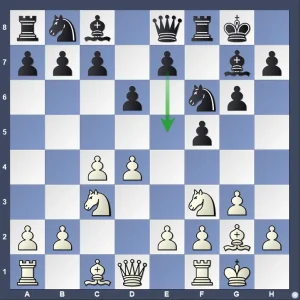
Black’s main idea is to advance in the center with the e-pawn. If White doesn’t know what to do, it is easy to end up in a bad position. They usually choose from 8.d5, 8.Re1, and 8.b3.
After 8.Re1, White is ready to meet …e7-e5 with e2-e4. Black usually refrains from that with 8…Qf7, targeting the c4-pawn. After 9.b3 Ne4 10.Bb2 Nc6 11.Rc1, Black can finally advance in the center with 11…e5.
In the viewer below, you can look at the game of one of the main experts of the Leningrad Dutch from this position.
After 8.b3, Black can push 8…e5 immediately or develop the queenside first with 8…Na6. After 8…e5 9.dxe5 dxe5 White’s important idea is 10.e4.
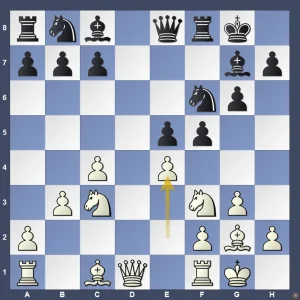
With this move, White fights for control over the center and avoids getting rolled by Black pawns. Let’s note that 10…fxe4 is no good here: 11.Nxe4 Nxe4 12.Qd5+ Rf7 13.Qxe4, and White is better.
Instead, Black usually develops with 10…Nc6. After 11.Nd5 Qd7 12.Ba3 Re8, their position looks clumsy but actually has a lot of dynamic potential.
8.d5 is aimed to stop Black’s central play.
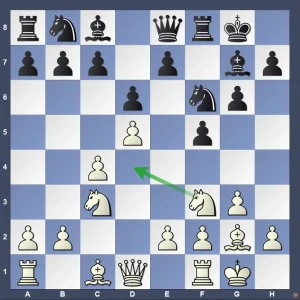
Now 8…e5 is bad: after 9.dxe6 Bxe6 10.Nd4, the b7-pawn is hanging, so Black has to play 10… Bc8. It doesn’t look good whatsoever.
Instead, Black should try to undermine White’s stronghold on d5 from the queenside. The most popular move is 8…Na6. After 9.Nd4 Bd7 10.Rb1 c6 11.b3 Nc7, Black can look for counterplay on any side of the board.
Black’s 7…c6 is a more solid option.
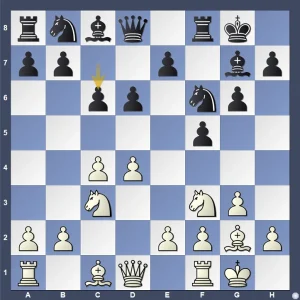
Black doesn’t rush with …e7-e5 and increases control over important squares first. Now after 8.d5, Black can already play 8…e5. After 9.dxe6 Bxe6, the following position arises:
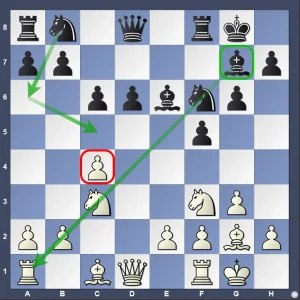
There is no 10.Nd4 anymore: it doesn’t attack b7 and hangs c4. White usually chooses between 10.Qb3 and 10.b3. The arising positions are complex, but Black can be satisfied with their active pieces. The knight from b8 can go to c5; the dark-squared bishop is strong.
Something similar can happen after 8.b3 Na6 9.Bb2 Qc7:
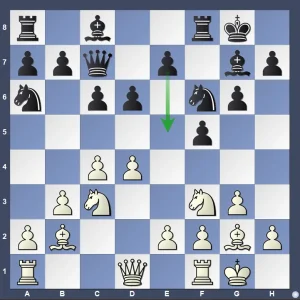
10.d5 e5 11.dxe6 Bxe6 with a typical position for the Leningrad Dutch. This is how the game Kasimdzanov – Nakamura (Tashkent, 2014) went. You can see it fully in the viewer below.
White has tried various things against the Leningrad Dutch, but overall, Black opts for the same setup and can play in a similar fashion. At the same time, the position is flexible: pushing …e7-e5 is the main plan, but playing on the queenside with …c7-c6, …c7-c5, or even …b7-b5 is also possible.
Quite often Black goes all-in on the kingside.
Let’s look at an example:
Ivan Farago – Pertti Poutiainen [A89]
Budapest Tungsram Budapest HUN (5), 03.1975
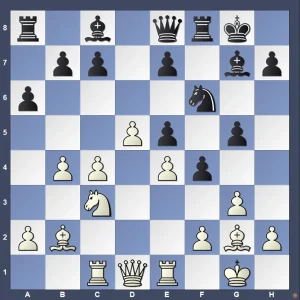
14…Ng4! With this move, Black starts the offense on the kingside. Now …Qh5 is coming, and the f-file can get opened at any moment. 15.Rc2 Qh5 16.h3 f3!
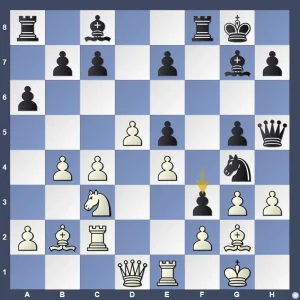
Great move. Now it is bad to take the knight, because after 17.hxg4 Bxg4, Black intends to checkmate White with …Rf6-Rh6. The game continued 17.Bxf3 Qxh3 18.Qd3 Nxf2!
Another great shot.
White’s position is hopeless. They resigned after 19.Rxf2 Qxg3+ 20.Kf1 Bh3+ 21.Ke2 g4.
White Tries to Refute the Leningrad Dutch
In the lines with White fianchetto, it seems like Black can build the known setup and proceed with logical moves. It is not necessary to memorize all the moves there if you don’t play against grandmasters.
Yet, White can play aggressively and Black should know how to react properly. One such dangerous try is 1.d4 f5 2.c4 Nf6 3.Nc3 g6 4.h4.
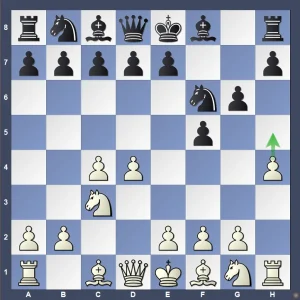
This barbarian approach should be taken seriously. White plans to play h4-h5 and destroy Black’s kingside. Now 4…Bg7 is inaccurate. After 5.h5 Nxh5 6.e4 fxe4 7.Rxh5! gxh5 8.Qxh5 Kh8 9.Nxe4, White gets a strong attack.
Instead, Black should play 4…d6.
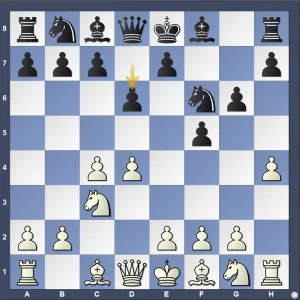
Now after 5.h5 Nxh5 6.e4 Nf6 7.Bd3 Bg7 8.exf5 Bxf5 9.Bxf5 gxf5, an interesting double-edged position arises.
Even trickier is to play 3…d6 and delay the fianchetto for the moment:
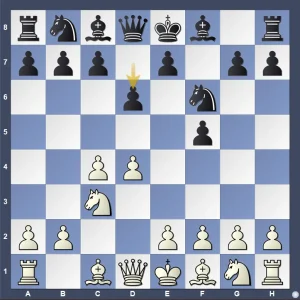
Now after 4.Nf3, the d1-h5 diagonal is blocked for the White queen, so Black can play 4…g6 and not be worried about the h-pawn attack that much anymore.
An interesting line for White is 4.Bg5. Black should respond with 4…Nbd7, planning …g6 next.
If White starts with 3.Nf3 instead of 3.Nc3, Black can play 3…g6 immediately. Once again, the h-pawn attack won’t be dangerous with the diagonal being blocked for the White queen.
In the Dutch Defense, White has a lot of tricky options early on. After 1.d4 f5,
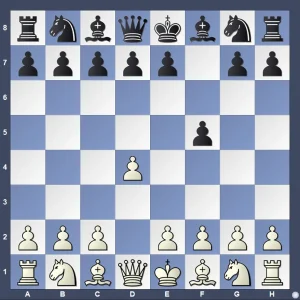
White has 2.e4, 2.Bg5, 2.Nc3, and many other interesting options. Experienced Dutch players aren’t usually afraid of such things. But it is good to know that the Leningrad players can avoid these early gambits by starting with 1…d6 or 1…g6.
Later, the pawn will march from f7 to f5 and the game will be transposed to the Leningrad Variation. At the same time, to be able to play these move orders, Black should be ready for the transposition into the Pirc or the Philidor Defenses after 2.e4.
Conclusion
The Leningrad Dutch is a great opening for ambitious players. It creates imbalances early in the game and gives Black good chances for seizing the initiative. The arising positions are flexible and interesting to play. You can also look at the 5 Reasons to Play Dutch.
Similarly to the King’s Indian Defense, Black can play the same setup against various White’s tries. But the Leningrad Dutch is less common and can take your opponent off-guard. The arising positions are unusual, so if White doesn’t have anything prepared, they can easily go off track. It makes the Leningrad Dutch an especially good choice for Black at the club level.
https://thechessworld.com/store/product/dutch-defense-leningrad-system-with-im-marcin-sieciechowicz/



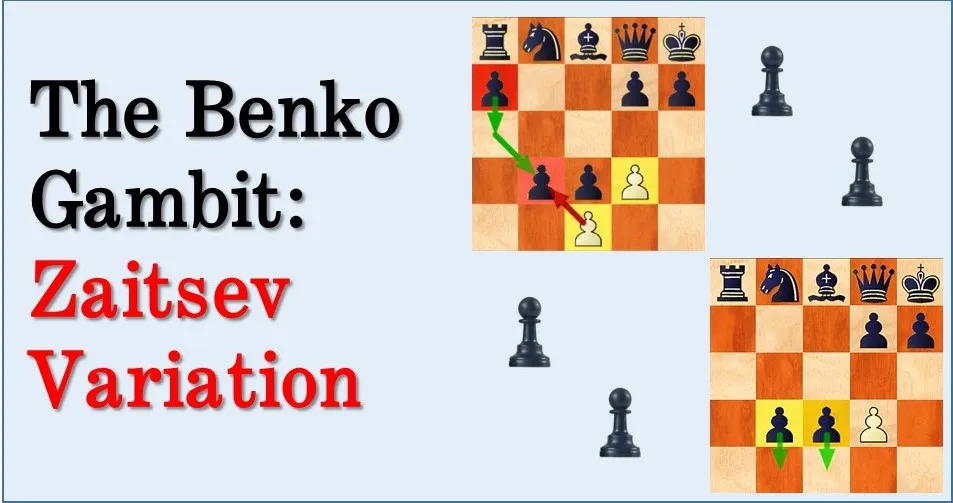
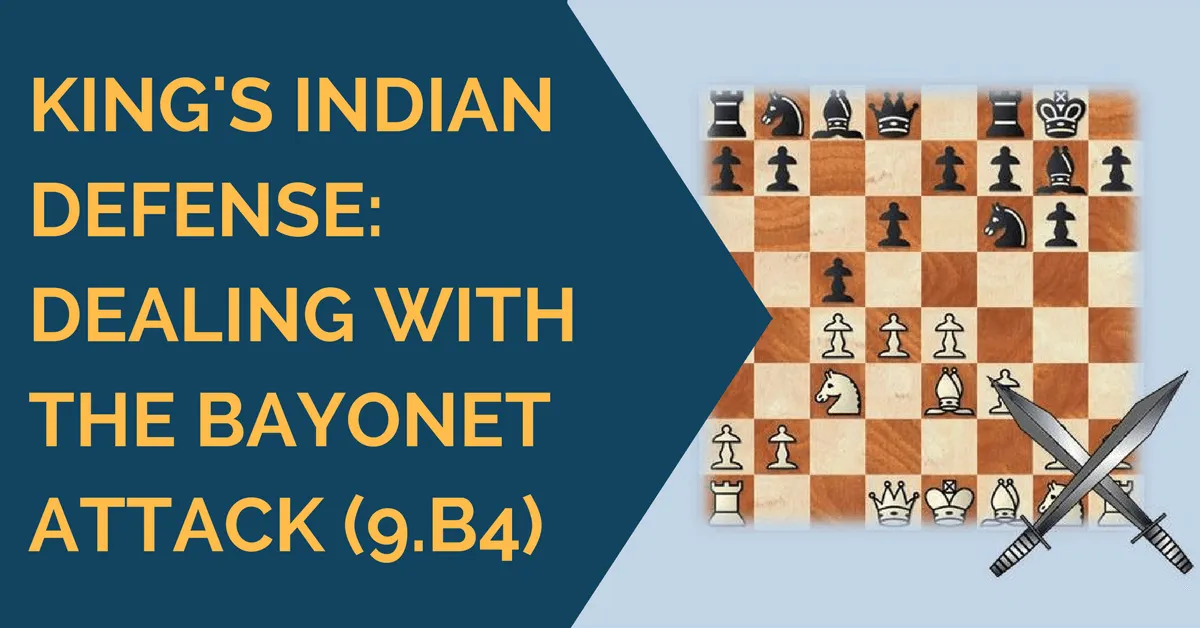
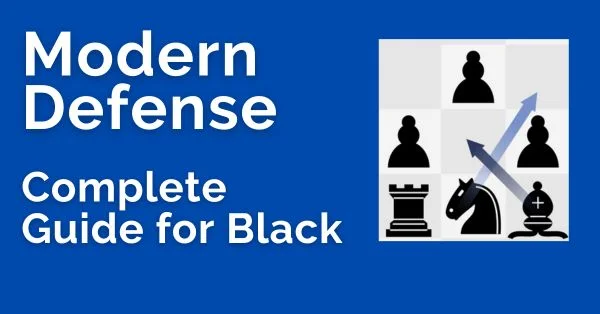




Comments: